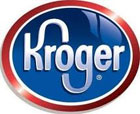| |
|
| |
|
 |
Supply
Chain by the Numbers |
| |
|
| |
- Aug. 3, 2017 -
|
| |
|
| |
|
| |
|
| |
Walmart Putting More Pressure on Vendors for Green Supply Chain; Retail Grocery Space in US Reaching Saturation? Charleston Says Let Barges Move Containers; Air Freight Volumes Continue Surge |
| |
|
| |
| |
| |
4.15 |
 |
| That is how many square feet of retail space in the US was devoted to food sales per person in 2016 – an all-time record. In fact, that number is some 30 times the amount of space allocated to groceries at major chains in 1950, though of course there were still many mom and pop grocers back then. Much of the growth in food retail space is coming from non-traditional grocery retailers, such as mass merchants, drug store chains, and dollar stores. That is in part leading to flat sales by most food retailers, according to an article this week in the Wall Street Journal, compounded by changing consumer behavior, as shoppers are shifting from big weekly shopping trips to more snacking and to-go meals. Interestingly, US convenience stores sold $73 billion worth of prepared foods, beverages and other food service last year, up a whopping 72% from 2010 "We've hit that critical moment where traditional supermarkets have realized they can't keep opening new stores to solve their problems," Kantar Retail analyst Diana Sheehan said. Kroger, for example, is reducing its new-store openings this year to 55 from 100, a nearly billion-dollar drop in capital expenditures, and that number is likely to fall further in coming years. The retail landscape continues to change very rapidly. |

|
|
| |
| |
|
|
|
That is the percent of goods Walmart US purchases from vendors that were part of its Sustainability Index program in 2016, meeting a goal set in 2012. That according to Walmart's recently released Global Sustainability Report. Last year, Walmart said it saw a 60+% increase in number of suppliers responding to the data survey, with some 2,000 suppliers completing 5,300 surveys. Walmart also says well over 300 of its buyers now have scorecards for their suppliers. Of course, that is not the only way Walmart is getting vendors on its Sustainability bandwagon. Earlier this year, Walmart announced "Project Gigaton," in which it will work with suppliers to reduce one Gigaton of emissions between 2015 and 2030. And Walmart says through its "Factory Energy Efficiency Program," it is working with suppliers to promote energy efficiency in the factories in its global supply chain. It has placed special focus on China, where its initiative complements the government's five-year goal of reducing energy intensity by 15% by 2020.
|
| |
| |
|
| |
| |
500 - 1000 |
|
That's how many containers would be carried on each barge from terminals at the Port of Charleston, to move imports and exports to and from a new intermodal yard being built up river from the port. The goal: replace movement of containers via drayage trucks with water-based barge traffic. The South Carolina state port authority has applied to the federal Department of Transportation for a marine highway designation that would let barges haul hundreds of cargo boxes at a time along the Wando and Cooper rivers. An answer is expected before the end of 2017. The official designation is critical because would open the project up for receiving federal grants that could help pay for developing the long-range proposal. The goal is to reduce congestion seen on local roadways and pre-emptively address the issues of an aging driver workforce. While still in basically a "white board" status, "We know it's physically doable," said Jim Newsome, CEO of the state port authority. Could this approach be used at other ports, SCDigest wonders?
|
| |
| |
|
|
|
| |
 |
 |
| |
|
|
| |